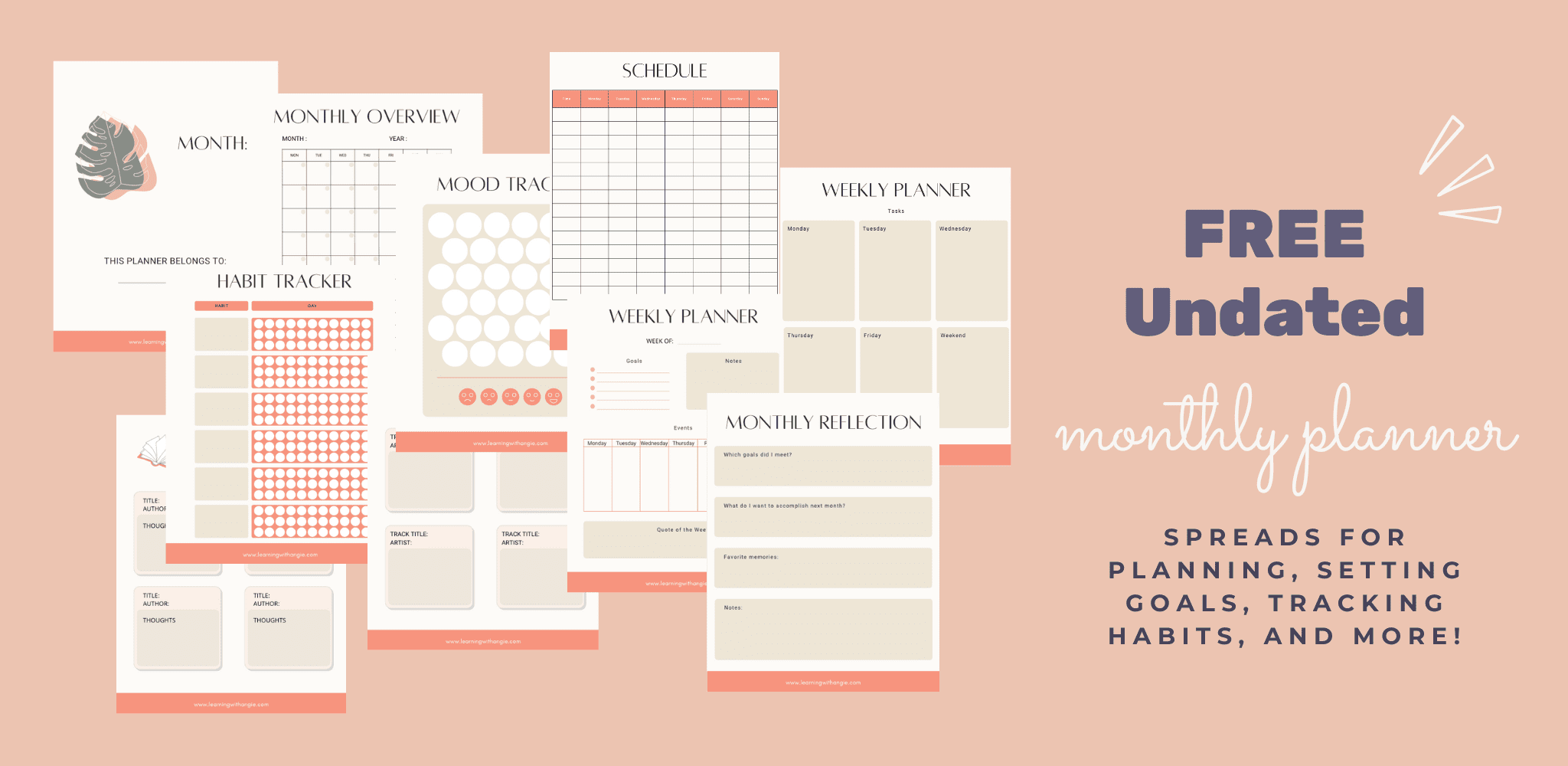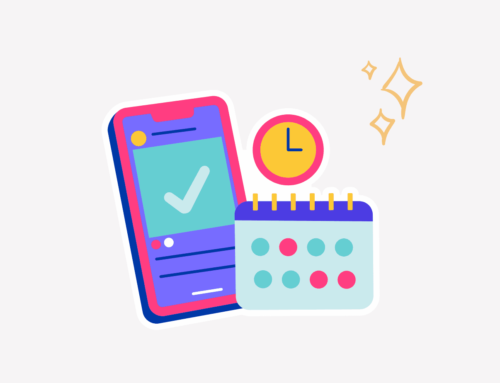

Imagine this: you’re given three weeks to write a research paper.
The first week, you keep on telling yourself to start the paper. However, a week goes by, and you make no progress.
The second week, a little voice in the back of your mind continues bugging you to start the paper. However, by the end of the week, you’ve still made no progress.
Finally, the third week rolls around, and it seems that you still can’t make time for the paper. The night before the paper is due, you pull an all-nighter to finish everything and show up to school the next day exhausted.
But the stress isn’t over yet”¦ the issue is that this keeps on happening, so you always feel like you’re missing sleep and behind on work.

This scenario may be a bit exaggerated (at least I’d hope so), but if procrastination is something you constantly struggle with, it can be very tiring and stressful. The good news is that there are strategies to stop procrastinating once and for all.
In this article, I share 10 ways to overcome procrastination for students that will not only help you avoid procrastination in the short-term but also in the long-term.
So if you want to be more productive and avoid the stress of finishing things at the last minute, keep on reading!
This post may contain affiliate links, which means that when you make a purchase through a link, I make a small commission at no extra cost to you.
Procrastination Tip #1: Identify the cause of your procrastination
Before taking action to fix your procrastination, you should ask yourself, “Why do I procrastinate studying or working on assignments?”
Identifying the cause of procrastination is essential to fix procrastination””you must understand what’s stopping you in order to determine an effective solution.
According to this book by psychologist Linda Sapadin and co-author Jack Maguire, there are six different procrastination types. They are:
The Worrier
You don’t start a task due to anxiety about doing it. As a student, this could mean that you delay studying for a test because you’re afraid the material will be too hard to learn.

The Perfectionist
You don’t start a task because you want it to be perfect but fear that it won’t be. For example, you may not start a research paper because you want it to be absolutely spectacular. By setting such high expectations for yourself, you become too afraid to begin.

The Over-Doer
You create a to-do list with an unrealistic amount of tasks each day. As such, you don’t prioritize important tasks and keep on pushing things back.
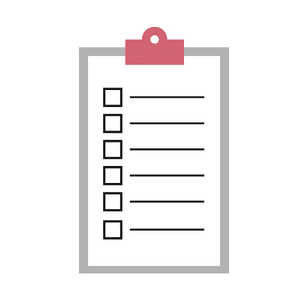
The Crisis Maker
You need stress to motivate you to start on an assignment. Going back to the research paper example, you don’t feel nervous about the deadline in the weeks leading up to it. It’s not until the realization that the paper is due the next day hits you that you start working.

The Dreamer
You have an attitude of: I don’t have to work hard to get what I want””good grades should fall into my lap. (I’m pretty sure this doesn’t apply to the majority of students.)

The Defier
You feel like your teachers give you busy work that isn’t worth your time. As such, you keep on delaying an assignment because you feel frustrated that you have to do something so pointless.

You may clearly identify with one of these types, or most likely have experienced a mix of a few. But no matter what the cause of your procrastination is, there are ways to fix it.
You may also like “Productive Day Schedule for Students””Be Productive 12+ Hours a Day!”
Procrastination Tip #2: Give yourself a self-talk
Once you’ve identified what’s causing your procrastination, you need to give yourself a good self-talk. Tell yourself what’s stopping you from getting work done. Explain why procrastination is bad for you in a logical way. Here are pep talks you can give to yourself:

The Worrier
I’m worried that I won’t be able to understand the material even if I study it. However, if I procrastinate and wait until the last minute, I’ll just be even more stressed. Delaying studying is just trying to avoid the inevitable, which is impossible.
Instead, if I start studying now, I’ll have more time to learn the material. With more time to practice, I won’t be as anxious when the test rolls around.
The Perfectionist
I don’t want to start the assignment because I fear that it won’t turn out perfect. However, the more I delay it, the lower quality the end product will be.
Additionally, worrying too much about the small details won’t even make a noticeable difference on my grade. I just need to focus on meeting the requirements of the assignment instead of setting unrealistically high expectations for myself.
The Over-Doer
I always expect myself to complete too many things in one day and end up accomplishing very little. I need to set more realistic goals for myself and take action to prioritize tasks so that I get things done when they need to be done.
The Crisis Maker
I don’t feel pressure to complete an assignment until the deadline is very close. However, I also hate being super stressed and staying up late to complete assignments at the last minute. It would be less stressful and healthier for me to stop waiting until the last minute to do everything.
The Dreamer
I want to get good grades, but I feel like I shouldn’t have to study to get them. This is unrealistic because we’re learning new material, so I have to spend time studying to understand them.
The Defier
I don’t want to work on an assignment because it seems like busy work. However, at the end of the day, whether I want to do it or not, I still have to submit it for a grade.
Therefore, it’s the better option to start working on it early than wait until the last minute and stressfully rush through the assignment.
Procrastination Tip #3: Change your attitude
This tip mostly applies when your defier side shows up. If you just can’t motivate yourself to do work for a class because you dislike it or think it’s busy work, then it’s time to change your attitude.

How can I change my attitude if I hate the class?
I devote an entire section to talking about this in my “How to Pass a Class You Hate””How I Went From a B- to A+” post. If you want a step-by-step explanation for motivating yourself to study for a class you don’t like, you should check it out.
However, to summarize quickly here, the main takeaway is that you must find meaning in every assignment.
For example, you may not enjoy reading and taking notes for your history class because you’re more of a STEM student. However, you need to recognize that learning the information is making you a more knowledgeable individual and improving your critical thinking skills.
How can I change my attitude if it really is just busy work?
If an assignment truly is just busy work, constantly thinking, “Ugh, I’m so frustrated that I have to do this” won’t help. The assignment will still be counted as a grade, so you still need to do it.
Therefore, you might as well just bite the bullet and do it.

You may also like “9 Best Night Routines for Students to Skyrocket Productivity”
Procrastination Tip #4: Plan bigger tasks in advance
Now that you’ve identified what’s causing your procrastination and given yourself a reasonable self-talk, it’s time to improve your time management skills.
If you have a big assignment to complete or a test to study for, break it up into manageable chunks over a few days or even weeks. Then, assign deadlines to these smaller chunks.
This is one of the best ways to overcome procrastination for students because it reduces stress and produces higher-quality work.

Example of Breaking Up An Assignment
I once had a month to create a 40-minute video with a corresponding study guide for my biology class. When the project was assigned, I broke it up into steps:
- Do research
- Write script
- Film video
- Edit video
- Make study guide

Then, I set reasonable deadlines to complete each task. I designated one week each to do research, write the script, and film the video. Then, I designated three days to edit the video and three days to make the study guide.
That way, I would have everything completed by the time the deadline rolled around.
Procrastination Tip #5: Get started on work as soon as possible when you come home
After returning home from a long day at school, it can be tempting to take a lengthy break. You shouldn’t give into the temptation.
However, this is not to say that you should start working immediately. Rather, you should take a 20-30 minute break to recharge and eat a snack.

However, if you take a break longer than that, you’ll lose your momentum. Additionally, the later it gets, the more tired you’ll get. Your energy level is directly related to your productivity, so this is not optimal.
Procrastination Tip #6: Make a to-do list ranked by priority everyday
If you make a daily to-do list without identifying priority tasks, it won’t help you fix procrastination at all.

Especially if you’re an over-doer, you may inundate your list with an unrealistic amount of tasks. And if you’re a perfectionist, you may spend too much perfecting one task on the list.
To fix these problems, you need to evaluate the importance of each task. If it’s a small homework assignment, ask yourself, “Does it really need to be that perfect?”

If you’re debating whether to start a research paper that’s due in three weeks, tell yourself, “There are many steps involved in completing this assignment. If I don’t complete this step today, I’ll be behind in my schedule [because remember in procrastination tip #4, you should have created a plan for completing the assignment already!] and cause more stress for myself down the road.”
And of course, if an assignment is due tomorrow, then you must complete it today.
Once you’ve decided which tasks are the most important, mark them with an asterisk so that you complete those tasks first.
Procrastination Tip #7: Time-block your schedule
If you don’t know what time-blocking is, it’s basically designating specific times to specific tasks. Once you create a to-do list (ranked by priority, as explained in procrastination tip #4), you should assign times to complete each task based on priority level.

Time blocking is one of the best ways to overcome procrastination for students because it forces you to focus on one task at a time. Our brains simply aren’t built for multi-tasking. In fact, according to experts, it can reduce productivity by as much as 40%.
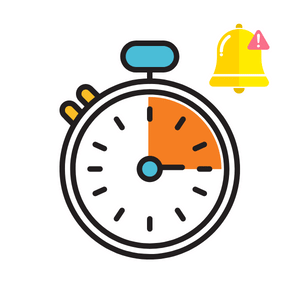
Additionally, time blocking gives you a sense of urgency to complete tasks. According to Parkinson’s Law, “Work expands so as to fill the time available for its completion.” If you don’t designate a set amount of time to complete an assignment, you don’t feel any urgency to complete it.
Consequently, you’ll take more time to complete it that could have been used to do other tasks. (This does not mean that you should set unreasonable completion times for yourself””make time estimates reasonably.)
Example of Time Blocking
In high school, I usually got home around 7 pm (I had an extracurricular that took up the entire afternoon). I designated 7:00 pm – 7:30 pm as the time to eat dinner. Then, from 7:30 pm – 8:00 pm, I would walk my dog.
At 8:00 pm sharp, I would sit down at my desk to start schoolwork. First, I would spend five minutes organizing my tasks by priority. Then, I would time block them. Here is a hypothetical example:
8:05 pm – 9:00 pm: study for calc test
9:00 pm – 9:30 pm: complete one-third of psychology study guide
9:30 pm – 9:45 pm: shower
9:45 pm – 10:15 pm: prepare for Spanish presentation
10:15 pm – 11:00 pm: research women’s rights in Britain from 1800-1850 for English research paper
11:00 pm – 11:15 pm: respond to work emails and messages
11:15 pm – 11:30 pm: prepare materials for tomorrow
Procrastination Tip #8: Use the Pomodoro Technique
The Pomodoro studying technique is a great way to deal with procrastination because it gives you a sense of urgency and prevents you from burning out.
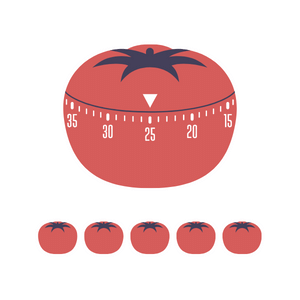
It has a fancy name, but it’s truly very simple. You need to work in 25-minute intervals and take 5-minute breaks in between. After four of these 25-minute work sessions, you take a longer break of 15-20 minutes.
To further optimize the Pomodoro technique, you should denote the specific tasks you want to complete during each Pomodoro session. Then, once the session is up, check the tasks that you were able to complete.
Setting artificial time deadlines creates a sense of urgency when working, and meeting these deadlines creates a sense of accomplishment.
For a free Pomodoro timer, check out this website.
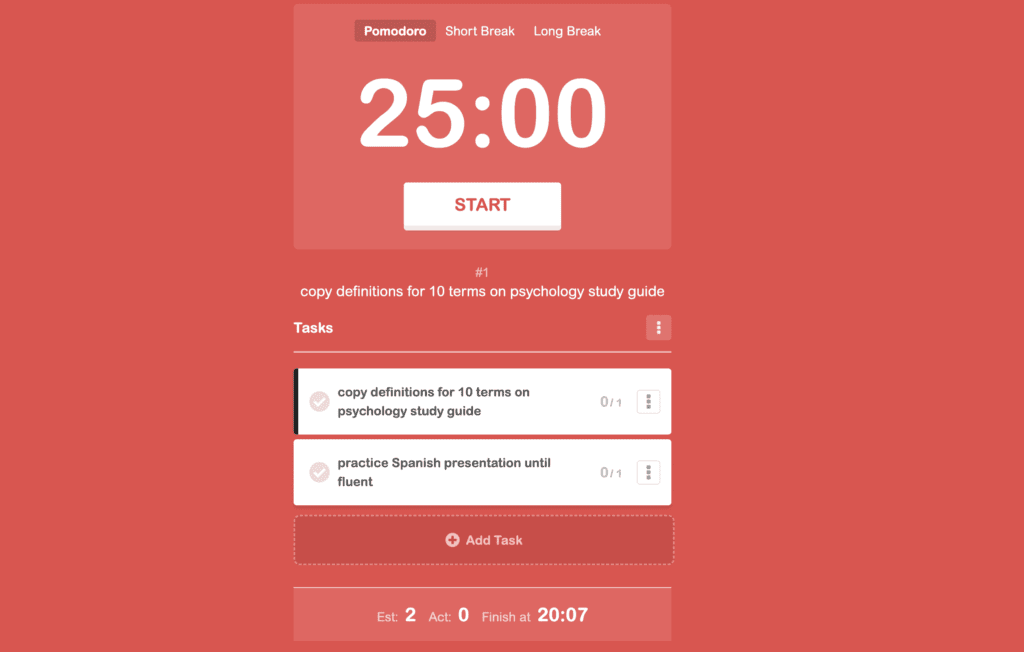
The picture above shows a sample timer I’ve set up. To add your tasks, simply click on the “Add Task” button. Set goals for how many tasks you want to complete during each Pomodoro session. When you complete a task, click the checkmark to the left hand side of the task.
Procrastination Tip #9: Track your progress
In order to deal with procrastination in the long term, you need to track your progress.

Here’s what I mean:
By having a realistic to-do list and time-blocking schedule, you’ll have a tangible record of everything you accomplish on a given day. Taking a look at these items will give you a sense of satisfaction at the end of the day.
The next day, you’ll want to continue implementing productivity techniques to achieve a similar sense of satisfaction.

Additionally, you can take tracking your progress further by doing weekly or even monthly reflections of your accomplishments. For example, you may work on a little of a project each day. It doesn’t seem like a lot on a daily basis.
However, when you reflect on your progress after a week, you’ll find that several small chunks of progress sum to a significant chunk of progress. That’s motivating to know!
Here’s How I Track My Progress
At the beginning of each week, I set goals for what I want to accomplish during the week. I divide those goals into smaller tasks over several days.
Then, at the end of the week, I go through and check off the goals I completed. I also reflect on whether I’m satisfied with my progress. If I am, what strategies did I use that helped me stay on task? If I’m not, what could I do better next week?
Then, I write down my goals for the next week and repeat the process. I also do a monthly reflection where I reflect on my progress and goals.
Reflecting on your progress will give you a sense of accomplishment that motivates you to avoid procrastination in the long term.
You may also like “11 Before Bed Journal Prompts for Better Sleep & Productivity”
Summary of How to Overcome Procrastination for Students
Procrastination is a serious mental and physical health killer. If you constantly procrastinate, you leave more work to do later on. This creates stress and prevents you from getting a headstart on newer assignments. Therefore, you feel constantly behind and dissatisfied with your productivity.
As you can see, no good comes out of procrastinating. If it’s something you struggle with, then it’s time to take action to fix procrastination once and for all.

Here’s a quick review of how you can benefit from all 9 of the procrastination tips for students:
First, identify the reasons for your procrastination. Then, give yourself a self-talk about why you need to actively deal with procrastination.
Next, if you feel averse to a particular class or assignment, work on your attitude. When faced with assignments and tests that take at least several days to prepare for, break them into chunks.
Then, each day, get into the habit of starting work as soon as possible, making a to-do list ranked by priority, time-blocking your schedule, and using the Pomodoro technique.
Lastly, reflect on your progress on a daily, weekly, and monthly basis. Associating a sense of satisfaction with being productive will make you more likely to stick to it.
Remember: procrastination can be a chronic habit, but so can productivity. It’s up to you to make that change.

Learning With Angie is a place to share honest, unfiltered advice to promote student success. So if you’re a student (high school, college, or beyond) looking for tips on productivity, studying, personal growth, and more to reach your potential, this is the place! To read more about Learning with Angie, click here.

